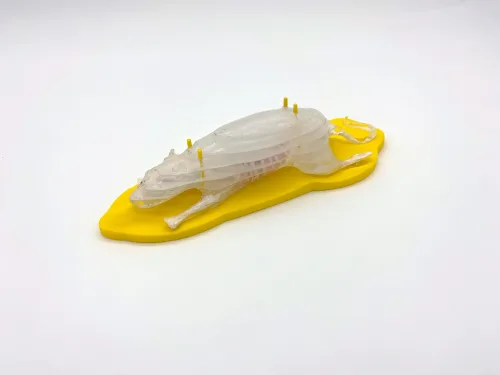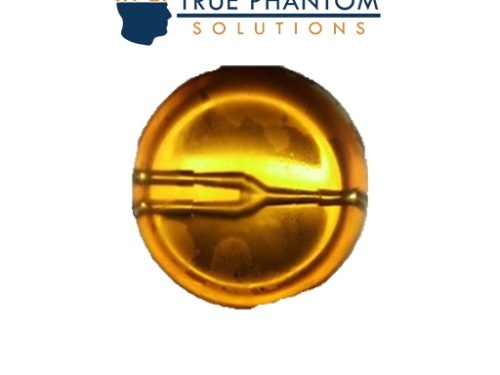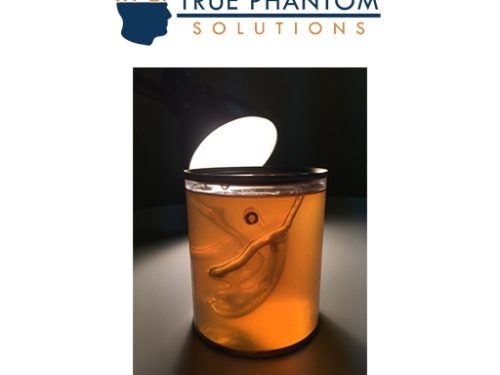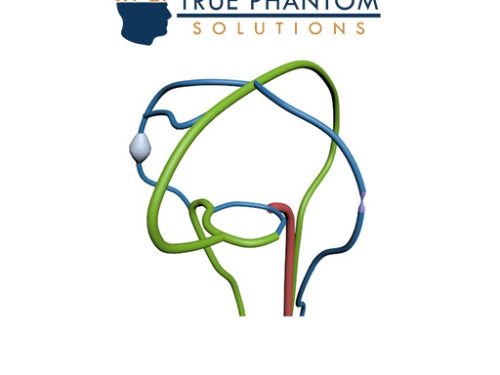-
 The Advanced Newborn Torso phantom was developed in collaboration with the Sonographic Clinical Assessment of the Newborn Training Program at the University of Calgary. This phantom is an deal tool for Ultrasound-guided procedures, such as catheter insertion through the umbilical cord and bladder catheterization. It is constructed with realistic tissue-mimicking materials suitable for Ultrasound and X-Ray/CT imaging.
The Advanced Newborn Torso phantom was developed in collaboration with the Sonographic Clinical Assessment of the Newborn Training Program at the University of Calgary. This phantom is an deal tool for Ultrasound-guided procedures, such as catheter insertion through the umbilical cord and bladder catheterization. It is constructed with realistic tissue-mimicking materials suitable for Ultrasound and X-Ray/CT imaging. -
 The Newborn Torso (Transparent) phantom was developed in collaboration with the Sonographic Clinical Assessment of the Newborn Training Program at the University of Calgary. This phantom is an deal tool for Ultrasound-guided procedures, such as catheter insertion through the umbilical cord and bladder catheterization. It is constructed with realistic tissue-mimicking materials suitable for Ultrasound and X-Ray/CT imaging.
The Newborn Torso (Transparent) phantom was developed in collaboration with the Sonographic Clinical Assessment of the Newborn Training Program at the University of Calgary. This phantom is an deal tool for Ultrasound-guided procedures, such as catheter insertion through the umbilical cord and bladder catheterization. It is constructed with realistic tissue-mimicking materials suitable for Ultrasound and X-Ray/CT imaging. -
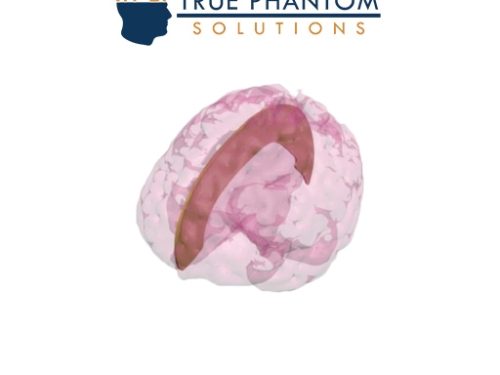 Falx Cerebri is a membrane which divides left and right brain hemispheres and it is designed based on an average anatomy of an adult human brain. This feature is a perfect navigation point for medical brain imaging and it is made from a realistic material suitable for ultrasound and MRI applications.
Falx Cerebri is a membrane which divides left and right brain hemispheres and it is designed based on an average anatomy of an adult human brain. This feature is a perfect navigation point for medical brain imaging and it is made from a realistic material suitable for ultrasound and MRI applications. -
 The Pediatric Full Body Phantom is an X-Ray/CT and Ultrasound-compatible training product used for training patient positioning techniques. It is popular among medical schools and teaching hospitals for training radiology students and medical professionals. This life-size phantom consists of anatomically correct organs and bones divided into 10 body parts.
The Pediatric Full Body Phantom is an X-Ray/CT and Ultrasound-compatible training product used for training patient positioning techniques. It is popular among medical schools and teaching hospitals for training radiology students and medical professionals. This life-size phantom consists of anatomically correct organs and bones divided into 10 body parts.

